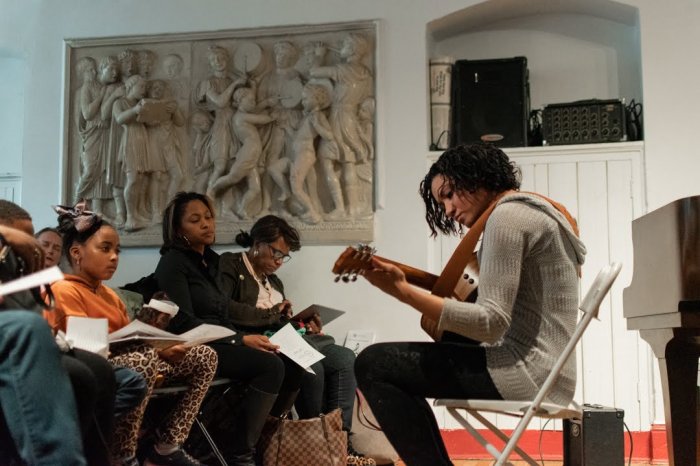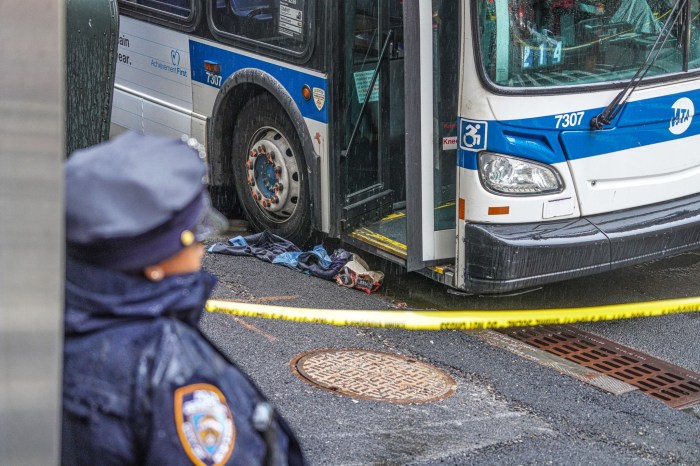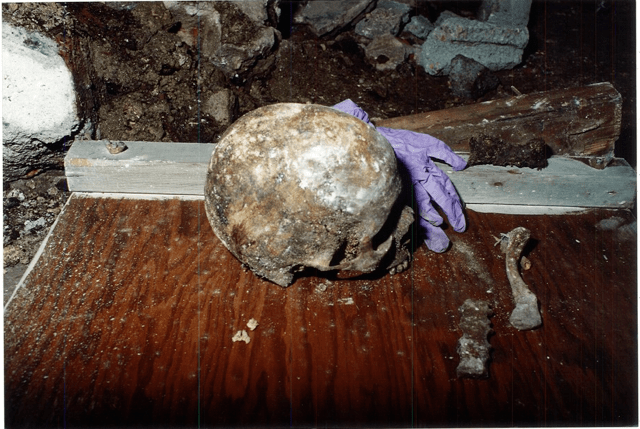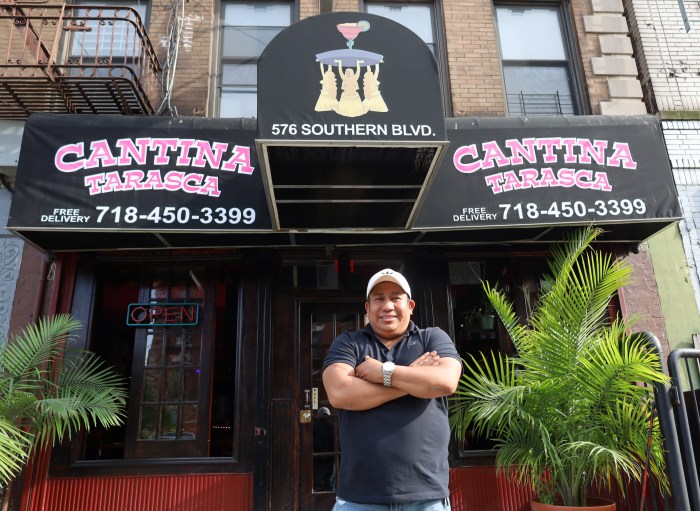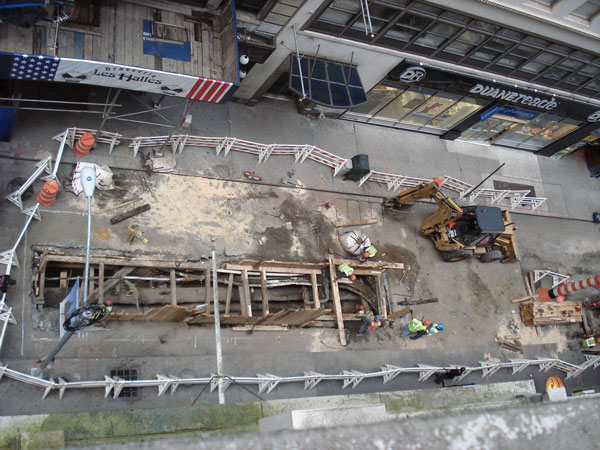
BY ALINE REYNOLDS | John Street resident Barbara Minsky couldn’t sleep for two straight nights this week due to jack hammering being performed by Con Edison.
Con Ed has pulled multiple all-nighters over the last week to locate a steam leak under the roadway that could be causing damage to a residential building in the vicinity.
Between Con Ed’s 24-hour emergency work along John Street and weekend construction happening at 180-182 Broadway (the neighboring site), Minsky, who lives on the sixth floor of 12 John St., feels as if she’s living in a “dungeon” of noise and vibrations.
“I put on my air purifier and my air conditioning and I could still hear the noise,” said Minsky. “Six days a week is too much for people to endure this kind of noise. We need some time off to recuperate.”
Mary Ann Moy, who lives on the floor below Minsky, is equally perturbed by the daytime noise that permeates the block. Her recent calls to 3-1-1, she said, have proved futile.
“You couldn’t possibly sit there and read or concentrate on any sort of work without having some overlay noise of your own,” said Moy.
Upon receiving these and other complaints, Assembly Speaker Sheldon Silver decided to intervene this week, calling Con Edison directly to request that they modify their construction hours to placate the residents.
“They’ve agreed to stop the overnight jack hammering and limit the evening work hours going forward,” said Silver. “Residents are entitled to enjoy their homes, have peace and quiet and [be able to] sleep at night, so that’s why we got involved.”
Con Edison couldn’t immediately be reached for comment.
The rest of the disruptions, however, aren’t slated to end any time soon. Now that the building at 180-182 Broadway has been fully demolished, developer SL Green Realty Corp. is working on the foundations of the future 23-floor dormitory. Rock drilling at the site is expected to continue for the next six weeks, and the project isn’t scheduled to be completed until late 2012. Meanwhile, the restoration of the nearby Corbin building — part of the Fulton Transit Center project — continues, and an edifice at 24 John St. is being converted into a hotel. The residents agreed, however, that most of the sounds and tremors are coming from 180-182 Broadway site and the Con Ed work along John Street.
Construction has also been a nuisance to residents at 176 Broadway such as John Reuther. Since returning from a summer-long trip earlier this month, the vibrations, he said have been “dramatically stronger” than he remembers them being in May and June.
Reuther is mostly concerned with the structural safety of his building. He suspects that part of its façade has shifted, since he now has difficulty opening one of his bedroom windows. “The bottom of the window is now scraping on the inside window sill, so it’s either been dislodged or part of that wall has shifted to the point where it’s made the window frame shift,” said Reuther.
Tom Kunkel, director of environmental compliance at the Lower Manhattan Construction Command Center, said he is doubtful the surrounding construction has caused any changes to the building’s position in the ground.
Such major vibrations, Kunkel explained, “would be picked up by the [vibration] monitors, and it would be difficult to hide it. They’re actually quite sensitive.”
While the noise and vibrations don’t frighten her, a longtime resident from 176 Broadway who requested anonymity said she frequently notices her mirrors and wall pictures shaking.
“It’s just annoying,” she said. “It’d be nice if the building would be ready and done so the students could come in and live there.”
Catherine McVay Hughes, vice chairperson of Community Board 1, reiterated the community’s concern to SL Green representatives that appeared at the Financial District Committee meeting earlier this month.
Hughes was particularly disturbed to hear that a ceramic object in the apartment of fellow 176 Broadway resident Annie Wing recently crashed to the ground and broke during one of the construction-related tremors.
“We know you listen, but it never changed,” said Hughes. “We hope that, going forward, the foundation process is an uneventful, free vibration process.”
“I know it’s not perfect, and I’m not going to stand here and say that it is,” replied Julie Greenberg, a spokesperson for SL Green. “We’re trying to control it as much as possible and we’re going to do everything we possibly can to move forward the project as quickly as possible.”
Joseph Houton, account executive at Key Real Estate Assoc., the management firm of 176 Broadway, said the disturbances are simply the cost of progress Lower Manhattan residents have to pay. While the company is in regular contact with SL Green, there is little that can be done to mitigate the negative impacts, he said.
“The building is in the middle of a construction zone — of course there are going to be disruptions,” said Houton.
Tishman Construction, the project’s general contractor, said the company has abided by the noise mitigation rules set out by the city’s Department of Environmental Protection, including placing mufflers on all of its machinery.
Responding to the residents’ complaints, Tishman is “going beyond what is required by the [Department of Buildings] and other city agencies to ensure the safety and security of neighborhood residents,” according to John Gallagher, the company’s vice president of public affairs.
“We will continue to work with [C.B. 1] and other stakeholders to address concerns,” he said.
Kunkel affirmed that, judging by recent Department of Buildings reports he has seen, “the vibrations [at 180-182 Broadway] have been within the acceptable limits of D.O.B. codes.” The decibel levels, meanwhile, which Kunkel’s team checks on a daily basis during its daily trips around the Financial District, have ranged from the low 70s to the low 80s — the equivalent to the amount of noise produced by ambient traffic.
“There is no question that this street has a large amount of work going on,” said Robin Forst, the L.M.C.C.C.’s director of external relations. “While it might not be in excess of New York City code, that doesn’t mean it isn’t noisy or difficult for the people who live there.”
Vibrations at 180-182 Broadway are now being limited to specific drilling operations that are monitored at street level, Gallagher noted. However, individual apartment monitors previously installed in Minsky’s home have been removed, according to Minsky. While they had been placed in the apartments during the demolition period at 180-182 Broadway, Gallagher said they are no longer required by city code.
And, as the symphony of noises and tremors persist, the residents’ lives continue to be put “on hold,” as Moy described it.
“I’m hoping to ride it out a little bit,” she said, “but they’re making it very, very unpleasant.”





